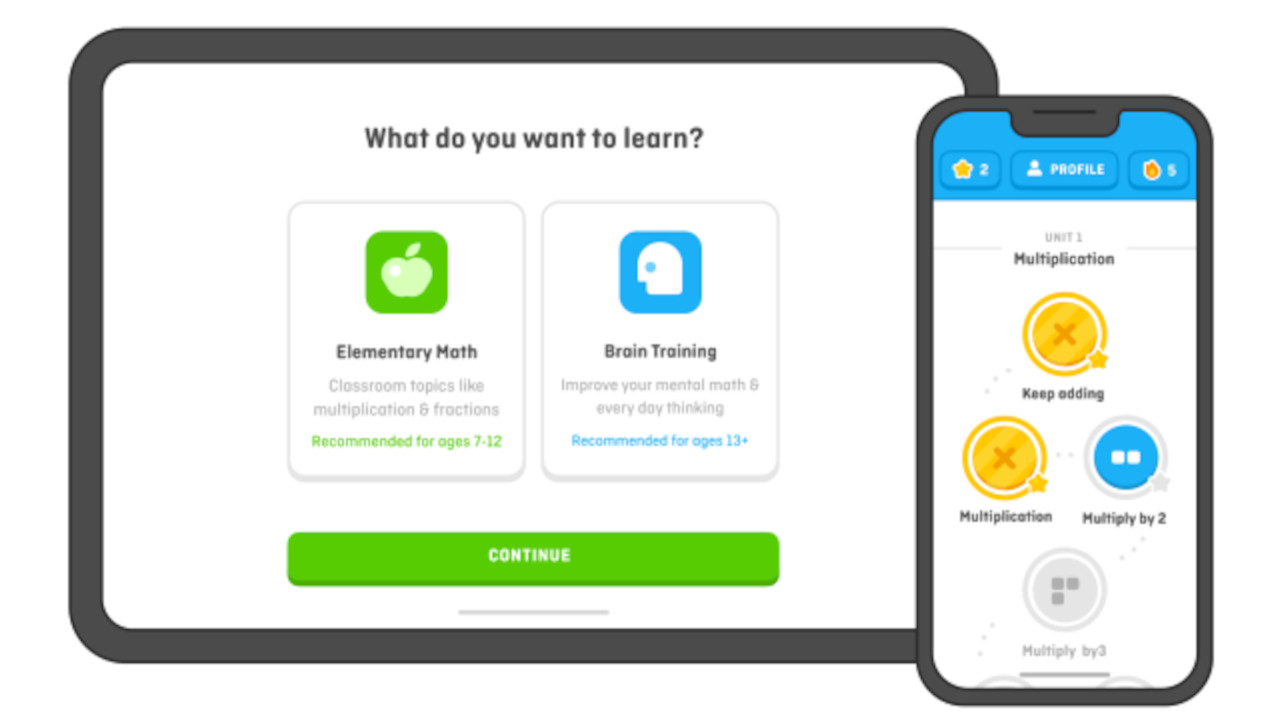What is Duolingo Math and How Can It Be Used to Teach? Tips & Tricks
Duolingo Math takes the app-based learning platform to a new number-learning level

Duolingo Math takes the gamified language learning platform of Duolingo and points it in the direction of math-based enhancement.
Following the pandemic, during which math results were negatively affected, Duolingo has launched its new app -- currently only for iOS at time of publishing. The company told Tech & Learning, "The plan is to launch on Android, but there is no firm timeline yet."
Comprising thousands of five-minute lessons, all visually engaging and gamified, this app aims to help students of all levels.
Free to use and ad-free too, this is an app designed to help students learn and understand math and enjoy themselves in the process. All the usual fun animations you may have come to expect from Duolingo appear here to make everything light and engaging but also familiar to those that have used the language version of this app.
What is Duolingo Math?
Duolingo Math is an app that aims to teach math to students by offering gamified-style lessons which help test to ensure learning happens naturally.

By using clocks, rulers, pie charts, and more, this app includes daily uses of numbers to help make the experience more rich and have real-world relevance. The fact lessons are broken down into five-minute micro-lessons also helps to ensure this can engage even those students who might otherwise struggle to concentrate for longer periods of time.
This app was created by a team of engineers and math scientists, who worked together to create a super minimal end result that's very easy to understand while still remaining challenging.
Tools and ideas to transform education. Sign up below.
Primarily this app is aimed at students between the ages of seven and 12 but can be used by anyone that finds its challenges useful. In fact the App Store has it rated for ages four and up.
How does Duolingo Math work?
Duolingo Math feels more like a video game than a learning platform, which is crucial as a way to reach even those students who may not like, or struggle with, math. Rewards such as multiple-day streaks and other badges help to bring students back for more.
Lessons begin with basics such as adding, subtraction, multiplication, and division. Students can then progress further to help push their abilities and try new areas such as algebra and geometry.
As you progress through the various levels the challenges adapt, becoming more difficult to help consistently encourage students to get better and learn more.

While this is primarily aimed at children there are also options for adults to help improve, progress, or simply strengthen their math abilities for use in everyday life. It's like a brain training app, such as sudoku, only this boosts real-world skills you may find helpful day to day.
What are the best Duolingo Math features?
Duolingo Math uses that classic Duolingo gamification to make this a really fun way to learn. Students will find themselves learning by doing, and by being able to manipulate objects, blocks, and numbers in a real way in which the results help teach.

The clock is a good example. By moving one hand, the other hand moves relative, allowing students to work with the clock numbers but also to learn -- intuitively -- the relationship between minutes and hours, for example.
This app also mixes up the way you input data so no two exercises will be the same one after another. This variation not only keeps students mentally challenged but also more engaged as they need to think differently each time they work through the next problem.
How much does Duolingo Math cost?
Duolingo Math is totally free to download and is ad free to use. You don't need to worry about children being bombarded by ads while using this app or having to pay any subscription fees to get the best out of the platform.
Duolingo Math best tips and tricks
Set targets
The app has its own challenges and levels, but set real-world rewards in class and beyond to help make this gamification extend into the room too.
Work together
Use the app in class, perhaps on the big screen, to give a taste to the class so they learn how to use it and realize how fun it can be on their own devices too.
Tell the parents
Communicate your positivity about this app to parents so they can include it in screen time for their children as a positive way to engage with a gadget.
Luke Edwards is a freelance writer and editor with more than two decades of experience covering tech, science, and health. He writes for many publications covering health tech, software and apps, digital teaching tools, VPNs, TV, audio, smart home, antivirus, broadband, smartphones, cars and much more.
